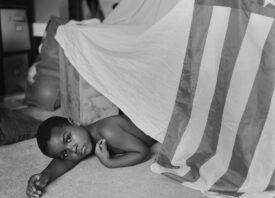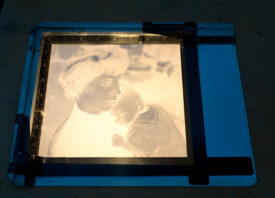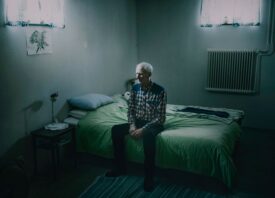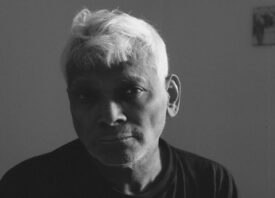Search this site
A Black Father’s Homage to His Young Son


Rashod Taylor has photographed his son LJ since the day he was born. Over the last five years, the artist had made countless pictures of his son’s many homemade forts, backyard adventures, naps, and more, creating an ever-evolving record of one boy’s childhood, his father’s love, and his place in history. “These images tell you more than my family story,” Taylor writes. “They’re a window onto the Black American experience.”
LJ, who just recently turned five, loves superheroes and action-adventure movies and television shows. Like his father, he also likes creating and building things from scratch, whether it’s making forts or taking self-portraits on an iPad. He enjoys spending time with his grandparents, who live just fifteen minutes away. He also has a lot of fun making pictures with his dad.
“What inspires me about LJ is that when he wants something he will go out and get it, no matter the cost,” Taylor tells me. “He is a little negotiator, whether it’s going to his Nana’s or Papa’s house, getting ice cream, or bedtime, he will negotiate and not take no for an answer. I hope this attitude stays with him when life doesn’t go the way he planned, that he would continue to fight for what he wants and, more importantly, fight for what is right.”
Right now, we’re seeing that second fight–the fight for justice–play out across national and international headlines, but it’s something that Taylor has always understood, first as a young Black man and now as a father to a young Black boy. When LJ goes to school or plays outside, his father sometimes fears for his safety and wellbeing.
“He can’t live a carefree childhood as he deserves; there is a weight that comes with his blackness, a weight that he is not ready to bear,” the artist writes. “It’s my job to bear this weight as I am accustomed to the sorrows and responsibility it brings, the weight of injustice, prejudices, and racism that has been interwoven in our society and institutional systems for hundreds of years.”
Taylor himself appears from time to time throughout the images–in the reflection in the window and on the coach–making his ongoing series Little Black Boy, at least in part, a self-portrait as well as an ode to family. “I am part of the story,” the artist tells me. “My journey of fatherhood plays a role in his childhood.
“Putting myself in some of the images shows his future, and then also for me, I see my past in him. What can I give him that I didn’t have growing up? How can I give him a head start? These things, along with others, come to mind as I step in and out of the frame with this series.”
As he’s grown, LJ has also taught his dad a few things. He’s encouraged him to see the world with fresh eyes, and as he gets older, he takes on more of a collaborative role within the project. “When it comes to ideas, he will come up to me and say, ‘Papi, take my picture,’ so, of course, I always oblige,” the artist says. For instance, it was LJ’s idea for his father to photograph him in a fort he built, and it was also LJ who took the American flag and draped it over the fort for the picture.
“The flag is a heavy symbol for me,” Taylor says. “It’s rich with meaning and with this series, I call it out because it plays such a large role in the everyday life of black people and people of color who live in America. You can’t discuss the life of a little black boy without bringing up the country that he lives in.
“More than anything, black history and American history are part of this marriage where they go hand in hand. There is no United States of America without the black slaves that were used to build it. This history, even 400 years later, is the backbone of the Country that we live in today. The remnants of this past are woven in the fabric of the systems and institutions that govern America, where we still fight for equality.”
The weight of injustice, one Taylor has carried throughout his life, also comes with hope for a better and more just future for LJ. He wants his son to see the whole world without fear of racism, to carry on his family’s legacy of standing in their convictions, respecting others, and fighting for what’s right, and to remember how much his dad loves him and always has.
“The ultimate dream would be for him to grow up where people didn’t judge him for the color of his skin,” the artist says. “We are not there, and may not get there in his generation. However, I am hopeful that the change that is happening now will continue, and the country will be at a better place for it.”
As for Taylor, he will continue the project for as long as he can. “I will be making photographs of him and the rest of my family until they take me up out of here,” he says. “In terms of the series, I am flexible to see what it can turn into. I do think as he transitions out of childhood, that would be a good transition into something else.”
When I asked Taylor what he hopes his son will see when he looks at these images years and even decades from how, he replies, “I hope he finds strength in his faith and from the example his parents have been in his life. I want him to see how important he is not only to me but how he has a special place in this world. How he is just as good as anyone else out there.”







All images © Rashod Taylor



